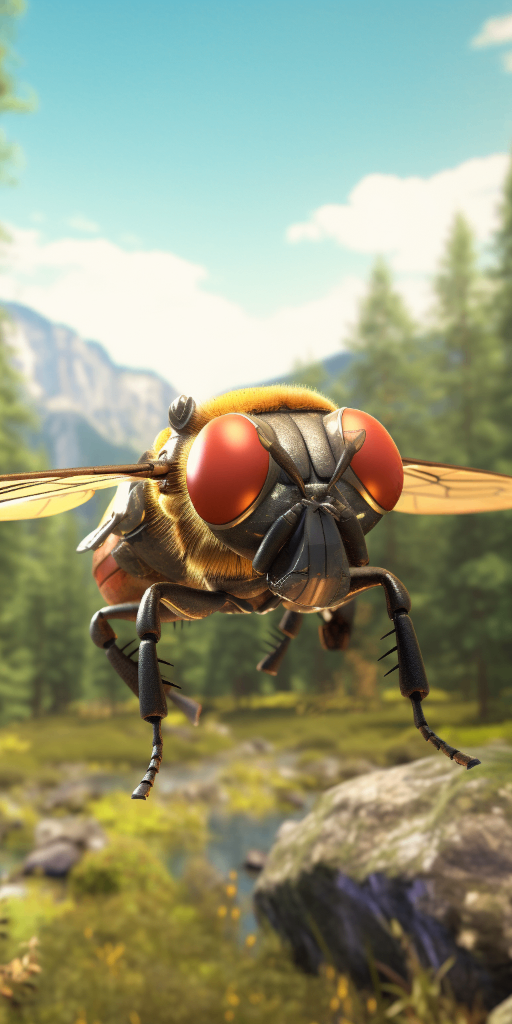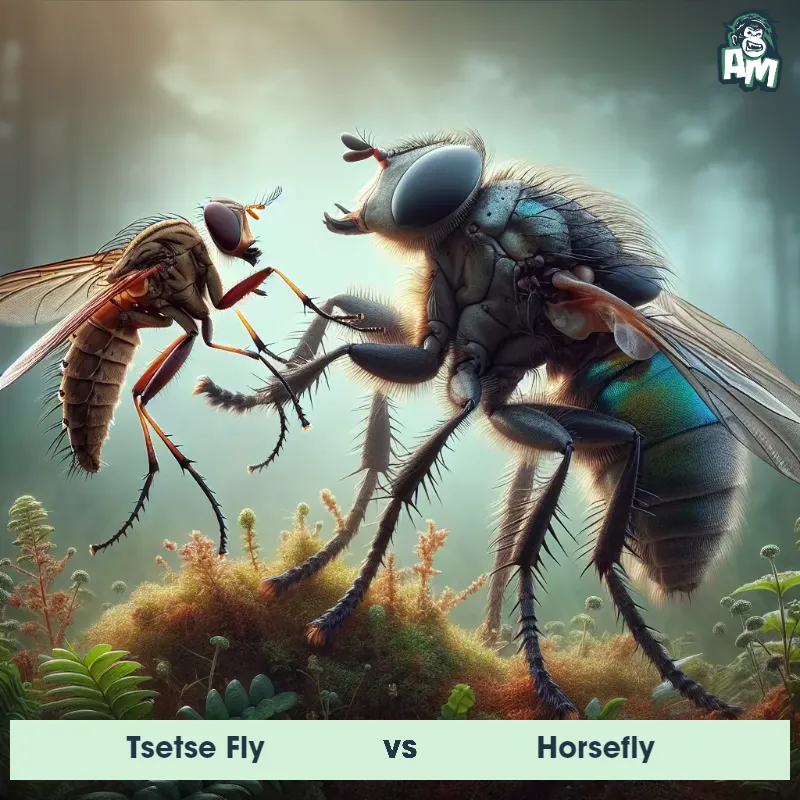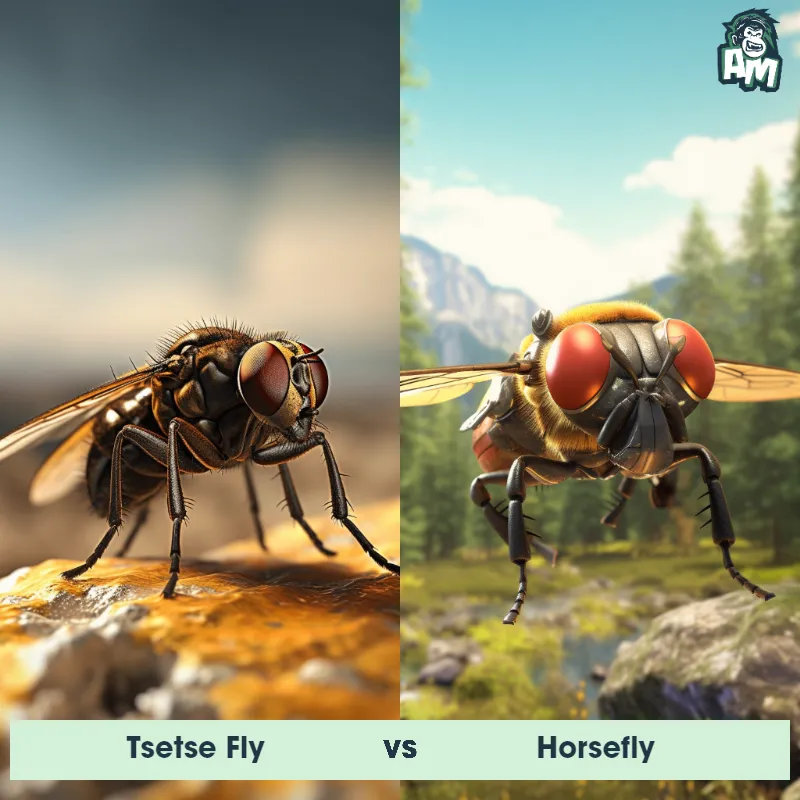The Horsefly
The Horsefly is a large and robust insect known for its powerful flight and painful bite. It has a stout body, measuring around 1-2 cm in length, with long, narrow wings that enable swift and agile movement. The Horsefly is usually dark brown or black in color, with large compound eyes and short antennae. Females are equipped with piercing mouthparts that they use to feed on the blood of mammals, including horses and cattle. These insects are commonly found in meadows, forests, and near bodies of water, and are known for their loud buzzing sound.

| Horsefly | |
|---|---|
| Size | 1-2 inches (2.5-5 cm) |
| Weight | 0.1-0.3 ounces (3-8 grams) |
| Speed | Speed: 30 mph (48 km/hr) |
| Key Strength | Ability to inflict painful bites |
| Biggest Weakness | Vulnerability to insecticides |
| Scientific Name | Tabanidae |
| Family | Tabanidae |
| Habitat | Near bodies of water |
| Geography | Worldwide |
| Diet | Blood |
| Lifespan | 1 day - 28 days |

The Horsefly
The Horsefly is a large and robust insect known for its powerful flight and painful bite. It has a stout body, measuring around 1-2 cm in length, with long, narrow wings that enable swift and agile movement. The Horsefly is usually dark brown or black in color, with large compound eyes and short antennae. Females are equipped with piercing mouthparts that they use to feed on the blood of mammals, including horses and cattle. These insects are commonly found in meadows, forests, and near bodies of water, and are known for their loud buzzing sound.
Fun Fact: Horseflies are exceptional flyers and can reach speeds of up to 30 miles per hour, making them one of the fastest flying insects in the world.
| Horsefly | |
|---|---|
| Size | 1-2 inches (2.5-5 cm) |
| Weight | 0.1-0.3 ounces (3-8 grams) |
| Speed | Speed: 30 mph (48 km/hr) |
| Key Strength | Ability to inflict painful bites |
| Biggest Weakness | Vulnerability to insecticides |
| Scientific Name | Tabanidae |
| Family | Tabanidae |
| Habitat | Near bodies of water |
| Geography | Worldwide |
| Diet | Blood |
| Lifespan | 1 day - 28 days |
Match Highlights
Horsefly Matchups
We use AI to simulate matchups between the Horsefly and other animals. Our simulation considers size, strength, and natural predatory behaviors to determine the most likely outcome.

Can't find the Matchup you want?
Create Your Own MatchupHorsefly: Diet, Predators, Aggression, and Defensive Behaviors
What do Horseflies eat?
Horseflies are blood-feeding insects that primarily feed on the blood of livestock, such as horses, cattle, and deer. They use their sharp mouthparts to pierce the skin of their host and feed on their blood. This feeding behavior can be quite painful for the host animal.
Do Horseflies have any predators?
Although Horseflies do not have many natural predators due to their large size and painful bite, some birds, such as swallows and purple martins, are known to feed on them. Additionally, dragonflies and parasitic wasps are also known to prey on Horseflies.
Are Horseflies aggressive?
Horseflies are known to be quite aggressive when seeking a blood meal. They are persistent in their pursuit of a host and can be quite bothersome to animals and humans alike. Their bites can be painful and lead to itching and discomfort.
Do Horseflies fight?
Horseflies do not engage in physical fights with each other. However, they may compete for food sources or mating opportunities. Male Horseflies are known to establish territories to attract females for mating.
How do Horseflies defend themselves?
Horseflies have several defense mechanisms to protect themselves from predators. They have excellent vision and agility, allowing them to evade predators. They are also equipped with sharp mouthparts that they can use defensively if threatened. Additionally, Horseflies can fly at high speeds, making them difficult to catch.
What is the biggest weakness of Horseflies in a fight?
Despite their speed and agility, the biggest weakness of Horseflies in a fight is their relatively fragile bodies. Their thin exoskeleton and delicate wings make them vulnerable to physical damage. Additionally, their large size and slow reaction time compared to other insects may put them at a disadvantage in a fight.
Fun Fact: Male Horseflies do not bite and solely feed on nectar and pollen, while the females require blood meals to produce eggs.
Fun Fact: Horseflies have sharp mouthparts that can easily puncture the skin of their victims, and their bites can be quite painful, leaving itchy welts that may take several days to heal.












